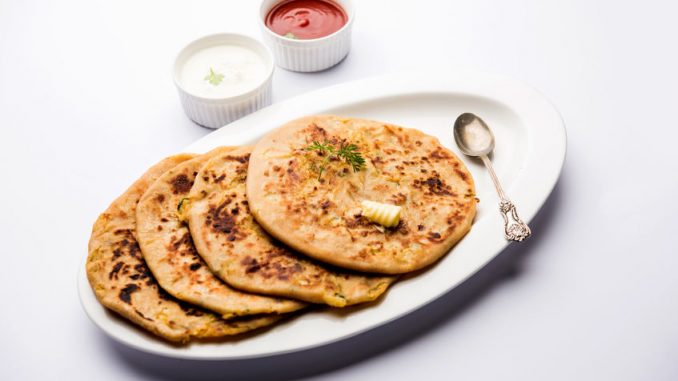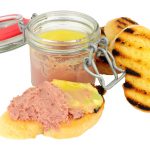
Paratha is a classic Indian flat bread which is similar to a chapati only richer and flakier. It looks like a triangular bread.
The bread is served in many Indian restaurants and even those with a diverse interest. I have many Indian friends who believe the best parathas are made in dhabas which are found mostly in northern India. One special place is the ‘murthal’ in haryana and Delhi’s Parathe Wali Gali at Chandni Chowk which is really old Delhi.
The paratha is especially good with more runny curries like a chicken tikka masala or indeed any other masala such as the one that uses kidney beans. It is eaten on its own but have a good glass of lassi to help digestion.
Essentially a chapati dough is prepared which is spread with ghee or butter. The bread is folded in on itself to create layers and then cooked on a tava or griddle until puffy. I’ve made these directly on a low-heat pan over a naked flame which makes for some interesting burnt breads but enough of that.
One of the key elements of a paratha is the stuffing. Look for an aloo paratha. It is full of spicy mashed potato and probably rivals a pasty in flavour. The great skill of the culinary artist is creating a stuffed paratha which does not fallapart as soon as you look at it.
By the way, the name paratha is taken from the stuffing used so you can find many great examples with different ingredients inside them. We have cooked parathas in ghee but a good quality frying oil is best.
Consume with raita, pickles and chutney, dal makhani etc.
Ingredients for preparing 9 or 10 good-sized breads:
- 400g wholemeal bread flour which should ideally be maida to be truly Indian.
- 400g plain white flour (maida), unbleached ‘all purpose’ flour is best
- 2.5 tbsp olive oil
- 500ml semi-skimmed milk
- a good pinch of salt
Preparation:
- Put both the flours into a large mixing bowl along with a pinch of salt. In most cases the flour needs to be sifted but the quality of good flour means this step can largely be omitted.
- Add the olive oil in sufficient quantity to make a soft dough.
- Place the dough onto a clean working surface which has been lightly floured.
- Knead vigorously for 10 minutes or more until the dough appears smooth.
- Place the dough in a lightly oiled bowl and cover with a damp cloth. Leave to rest for a half hour.
- Place the rested dough on a lightly floured surface and divide into nine equal pieces.
- Cover eight pieces with oiled cling film.
- Shape the remaining piece into a ball and flatten it out. Roll into a 15cm/6inch round.
- Brush the round with some ghee or melted clarified butter and fold in half. Keep brushing and fold in half again to form a triangular shape. Repeat with the remaining dough. Stack, layered between clear film to retain moistness.
- Heat a griddle or pan – a heavy frying pan works well.



Leave a Reply